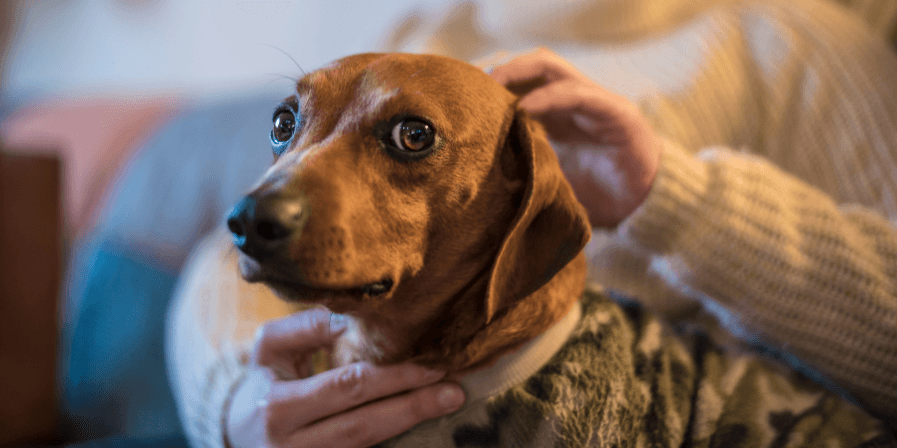10 Essential Tips for Your First 30 Days with a New Dog

Bringing a new dog into your home is an exciting milestone. Whether you've adopted an energetic puppy or a seasoned rescue dog, those first 30 days are pivotal in building trust, establishing routines, and ensuring your furry friend feels safe and loved.
This guide will walk you through 10 essential tips to make this transition smoother and set the stage for a harmonious relationship with your new companion.
1. Be Patient with Your New Dog
Moving to a new home can be overwhelming for a dog. They might feel anxious, shy, or even confused as they adapt to new sights, sounds, and smells. It’s essential to give your dog time to adjust to their surroundings at their own pace. Let them explore the house gradually, keeping them in a smaller, secure area at first if needed. Avoid overwhelming them with too many visitors or interactions, and let them approach you and others when they feel comfortable. Trust takes time to build, but patience will help your dog feel safe and loved.
2. Establish a Consistent Routine
Dogs thrive on structure, and establishing a predictable routine is key to their well-being. Set consistent times for feeding, bathroom breaks, walks, and playtime. Routines not only make your dog feel secure but also aid in house-training and behavior management. For instance, feed your dog at the same times every day and follow up with a bathroom break. Over time, your dog will learn what to expect and when, reducing anxiety and confusion.
3. Gradually Introduce Other Pets
If you have other pets, careful introductions are necessary to ensure harmony in your household. Choose a neutral space, like your backyard or a nearby park, for the first meeting to prevent territorial disputes. Keep the initial interactions short and supervised, rewarding calm and friendly behavior with treats and praise. Some pets may bond quickly, while others may need weeks to adjust. Be patient and never force interactions. Over time, with positive reinforcement, most pets learn to coexist peacefully.
4. Start Crate Training Early
A crate provides your dog with a safe, den-like space where they can relax and retreat when needed. It’s also a helpful tool for house-training and managing your dog’s behavior when you’re away. Start by introducing the crate as a positive space, placing comfortable bedding and a favorite toy or treat inside. Encourage your dog to enter the crate voluntarily, leaving the door open at first. Gradually increase the amount of time they spend inside, always associating the crate with positive experiences. Never use the crate as a punishment.
5. Focus on House-Training from Day One
House-training is one of the most important tasks to tackle in the first month. Start by designating a specific bathroom area outdoors and taking your dog there frequently—especially after meals, naps, or play sessions. Reward them immediately after they go in the correct spot with treats and praise. Accidents are a normal part of the learning process, so be patient and avoid scolding your dog. Instead, clean up messes promptly and redirect them to the right spot. Consistency and positive reinforcement will ensure success over time.
6. Schedule a Veterinary Visit
A visit to the veterinarian should be one of your top priorities during the first week. This check-up ensures that your dog is healthy and up-to-date on vaccinations, flea prevention, and deworming. If you’ve adopted your dog from a shelter, bring any medical records they provided to help the vet understand your pet’s history. This visit is also an opportunity to discuss nutrition, spaying or neutering, and any behavioral concerns you may have. Building a relationship with your vet early on will give you peace of mind and keep your dog healthy.
7. Provide Mental and Physical Stimulation
An active dog is a happy dog, and stimulation goes beyond daily walks. Engage your dog in activities like fetch, tug-of-war, or agility games to keep them physically fit. Mental exercise is equally important—offer puzzle toys, training sessions, or games that encourage problem-solving. For example, hiding treats around the house and letting your dog sniff them out can be a fun way to challenge their brain. Adequate stimulation prevents boredom, reduces anxiety, and helps curb destructive behaviors.
8. Invest in Obedience Training
Obedience training is a valuable investment in your dog’s future behavior and your relationship. Teaching commands like “sit,” “stay,” and “leave it” establishes communication and makes daily life more manageable. You can start training at home or enroll in a group class for additional socialization. Professional trainers can also address specific behavioral issues if needed. Training sessions should be short, consistent, and positive, with plenty of rewards for good behavior.
9. Monitor Behavior and Health Closely
During the first month, keep a close eye on your dog’s behavior and health. Watch for signs of stress, such as excessive barking, pacing, or hiding, as these may indicate anxiety or discomfort. Similarly, look out for symptoms of illness, like vomiting, diarrhea, or lethargy. If you notice anything concerning, consult your veterinarian promptly. Observing your dog closely during this adjustment period helps you address issues early and ensures their well-being.
10. Shower Your Dog with Love and Affection
Above all, make your dog feel loved and valued. Spend quality time together, whether it’s through play, training, or simply relaxing on the couch. Use a calm and gentle tone when speaking to them, and offer plenty of praise and affection when they display good behavior. Remember that every dog has their own personality and needs. By understanding and respecting their unique traits, you’ll create a strong bond that lasts a lifetime.
Final Thoughts
The first 30 days with your new dog are both a challenge and a joy. While there may be hurdles, such as house-training accidents or adjusting to a routine, these moments are opportunities to build a deeper connection with your pet. With patience, consistency, and love, you’ll create a nurturing environment where your dog can thrive.
Remember, every dog is different. Be flexible in your approach and adapt to your dog’s personality and needs. By following these tips, you’re setting the foundation for a happy, well-adjusted companion who will bring joy to your life for years to come.
If you need expert guidance, DCC Animal Hospital is here to support you and your new puppy with world-class veterinary care and advice for every step of your journey together.
FAQs
1. When should I take my new dog to the veterinarian?
It’s recommended to schedule a veterinary visit within the first week of bringing your dog home. This initial check-up ensures your dog is healthy, allows you to discuss vaccinations, deworming, and flea prevention, and provides an opportunity to address any concerns about diet or behavior. If you adopted your dog from a shelter, bring any medical records they provided. Regular veterinary care is essential for maintaining your dog’s health and well-being.
2. What is the first thing you do when you get a dog?
When you first get a dog, it’s essential to prepare your home by creating a safe, comfortable environment. Set up a designated area for them to eat, sleep, and relax, and ensure you have all the necessary supplies, such as food, a bed, toys, and a leash. Once they arrive, introduce them to the space calmly, and give them time to explore at their own pace. Start building a consistent routine right away, including feeding, bathroom breaks, and playtime. Most importantly, allow your dog to adjust gradually and offer plenty of love and reassurance.


 How can we help?
How can we help?